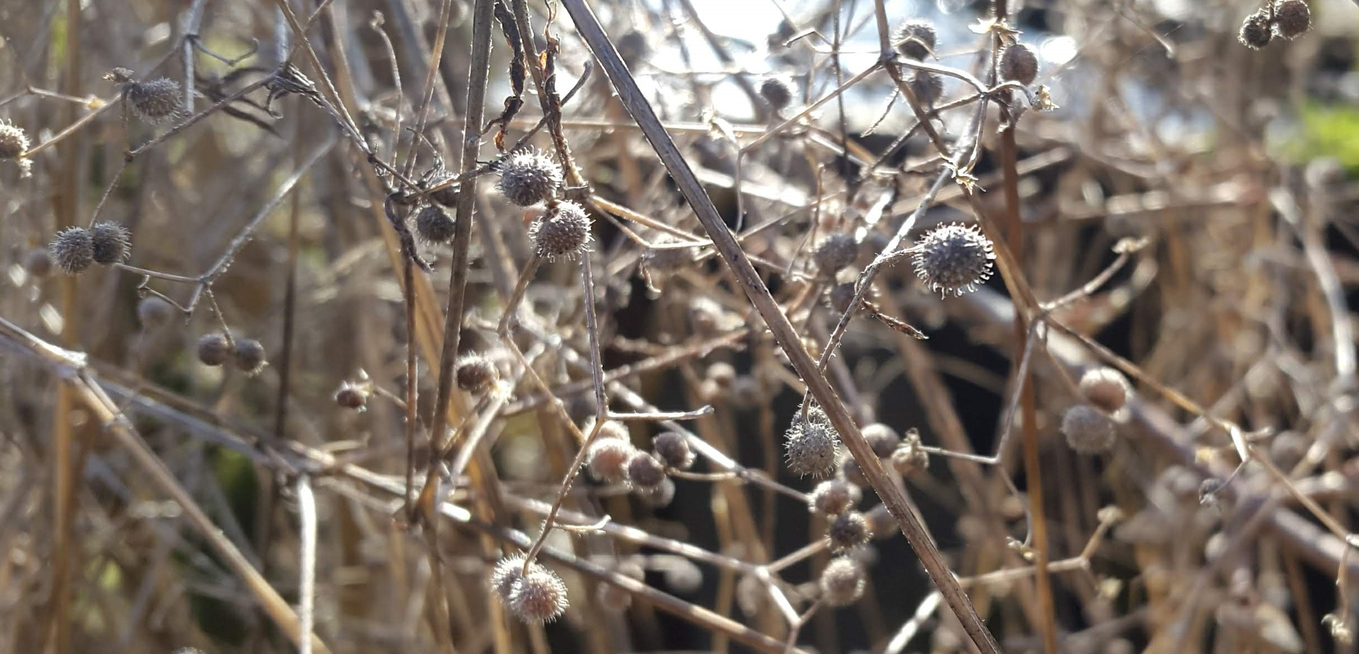Words by forager, Sarah Watson
Photography by Sarah Watson

Cleavers are among the earliest green shoots of the year, imparting a cool, refreshing and slightly sweet flavour to cocktails, with notes of cucumber, green pea and honeydew melon.
Common names: Cleavers, clivers, stickyweed, sticky willy, goosegrass.
Latin name: Galium aparine
Plant family: Bedstraw (Rubiaceae)
Edible part: Parts above the ground - leaves and stem (also seeds).
With its clinging leaves and stalk, and little round 'burrs', cleavers is probably best known for sticking to clothing and animal fur, and as a straggling garden and crop 'weed'. The tiny, prickly hairs covering much of the plant give it a rough, Velcro-like feel and enable it to climb. Geese enjoy eating it, hence the name 'goosegrass'.
Cleavers is native to Britain and much of Europe and Western Asia, as well as some parts of Africa and South America. Also found in parts of North America, it is considered likely to be native there too. Having been introduced to Australia and New Zealand, cleavers has also naturalised there.
Traditionally considered health-giving, cleavers has long been used to treat various ailments. It is said to be beneficial for the skin - Celtic folklore says drinking a cleavers infusion made you so beautiful that everyone would fall in love with you!
A traditional, fizzy beer-like drink was made as a spring tonic in some parts of England with nettles, cleavers and ginger. Herbalists still consider cleavers a tonic herb with medicinal properties. Belonging to the same family as coffee, cleavers seeds can be roasted and ground to make a pleasant coffee-tasting drink which contains some caffeine.
Cleavers is among the modern-day wild botanicals used to flavour Spring Gin from Ireland's Glendalough Distillery. It is also one of the herbs and spices used to infuse Lindores Abbey Distillery's botanical spirit, Aqua Vitae.

This annual plant is abundant and widespread in hedgerows, ditches, verges, disturbed and cultivated soil, field edges, gardens, woodland and waste ground.
The long, trailing, soft stem is square in cross-section with hair-like prickles on the stem ridges. The narrow, pointed leaves are arranged along the length of the stem in star-like whorls of six to eight. The leaves are up to 50mm long with a single vein, and are covered in tiny hairs. The plant often climbs over others, sprawling in a tangled mass of around a metre long.
In summer it has clusters of greenish-white, four-petalled flowers just a couple of millimetres across. Its small, green spherical fruit (drying to straw-brown – pictured above) are 'burrs' around 5mm in diameter, covered in hooked bristles that stick to animal fur. Cleavers is a food plant for the caterpillars of some beautiful hawk moths, as well as many other small insects.
Early-season cleavers imparts a delicate, fresh, cucumbery flavour with a mild sweetness. It complements flavours like nettle, basil, mint, elderflower, ginger and honey, as well as citrus, strawberries, apple, pineapple, kiwi, melon and tomato. Try cleavers with cocktails based on white wine, gin or vodka, or spirits with vegetal notes like tequila and pisco.
Infusing a fresh cleavers into a drink in the fridge for a few hours, or overnight, adds a cool, green herbal flavour. Add a handful to a bottle of soda or tonic, or a jug of Classic Pimm's, and remove before serving. Take care not to steep it for too long, as the raw plant contains bitter tannins.
Try a refreshing cleavers spin on a Cucumber and Mint Seltz by infusing fresh mint leaves in vodka for a day or so and topping with cleavers-flavoured soda. Cleavers in white or dry vermouth adds a layer of grassy, herbaceous freshness well-suited to Martini cocktails.

Pictured above is my version of a gin sour with The Botanist Gin, cleavers juice, honey syrup, lime juice, muddled mint, and an egg white foam - garnished with mint, cleavers and a charred lime wheel. Adding a layer of foam to your cleavers cocktail ensures it looks less like green pond water! Swap fresh, green cleavers juice for the muddled cucumber in cocktails like the Cucumber Sake-tini and the Cucumber and Mint Martini.
To make cleavers juice for cocktails, carefully wash a handful or two of the freshly-picked plant material, chop, add a little water, and blend until smooth. Fine strain and serve straight away. Herbalist and forager Monica Wilde suggests using a manual wheatgrass juicer to get pure juice from fibrous plants like cleavers, the stems of which can wrap around electric blender blades.
Monica recommends imbibing in moderation, with no more than 60ml of pure juice in a drink. Juices from edible, wild plants like cleavers tend to be potent and contain many plant compounds, including antioxidants, enzymes, vitamins and minerals. Cleavers also have blood-thinning and potential uterine stimulant properties, so it may be advisable for those who are pregnant or on blood thinners not to consume the juice.
Foraging cleavers:
• Note that some people are sensitive to the sap of the plant, which can cause localised skin irritation.
• Cleavers looks similar to some closely-related plants e.g. lady's bedstraw and sweet woodruff. Both are hairless or with few hairs, and without the 'sticky' prickles. Hedge bedstraw is differentiated by its smooth leaves, which are only prickly on the edges, and smooth stems. False cleavers has blackish fruits without bristles, the stiffer, rougher stems can reach almost twice the length of cleavers' – it is much rarer in the UK.
• Harvest from late winter through to spring in the UK. Later in the year, it can become more bitter and stringy. Young shoots, or growing tips are softer and juicier.
• Avoid gathering from areas that may have been sprayed with weedkillers, or could be polluted, like old industrial sites and busy roads. Only pick green, healthy-looking leaves.
• Cleavers has a high water content. If drying the plant, dehydrate it quickly, ensuring conditions are dry with no dampness. Cleavers contain coumarin, which becomes toxic if plant material goes mouldy.
When foraging, always use good field guides to identify your finds to 100% certainty before eating them - if in doubt, leave it out.





Join the Discussion
... comment(s) for Bartenders' guide to foraging: Cleavers (stickyweed)
You must log in to your account to make a comment.